Editor’s note: In honor of prom season, take a close look at one of the Museum’s ball gowns with costume collections intern Corie Azem.
While the House of Dior is most readily identified with the seminal New Look collection, it is also well known for their luxurious gowns. In Chicago, Christian Dior’s garments were first available for purchase through two high-end retailers: Marshall Field’s 28 Shop and the Stanley Korshak boutique. In 1949, one very ambitious and auspicious debutante, Miss Jeanne Brucker, won a one-of-a-kind, custom-made Dior gown to be worn at the inaugural Passavant Cotillion and Christmas Ball.
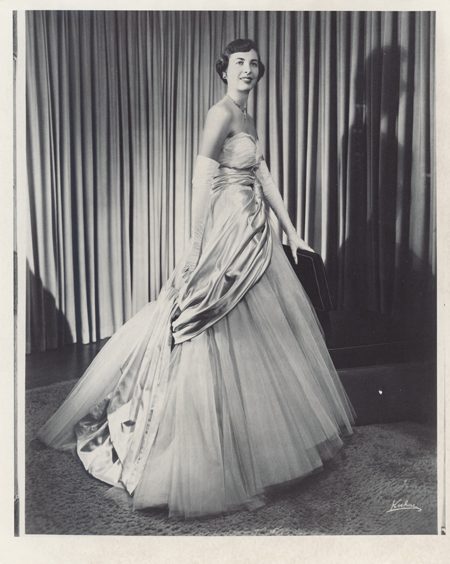
Miss Jeanne Brucker in her Dior gown, 1949. CHM, ICHi-074219
By selling the most tickets, $3,250 worth, to support Passavant Memorial Hospital (now part of Northwestern), Miss Brucker became the envy of the thirty-six other debutantes, winning the ultimate prize, an haute couture gown by the House of Dior. The second-place prize was a choice of gowns from the 28 Shop, valued up to $500.
Miss Brucker had already made her gown to wear to the event and, upon winning the extravagant prize, decided to bring that gown to the cotillion in case the weight of her new Dior one became too much. The Dior gown was constructed of 118 to 125 yards of silk tulle and fifteen to twenty yards of satin, all of which totals to about thirty-five pounds.
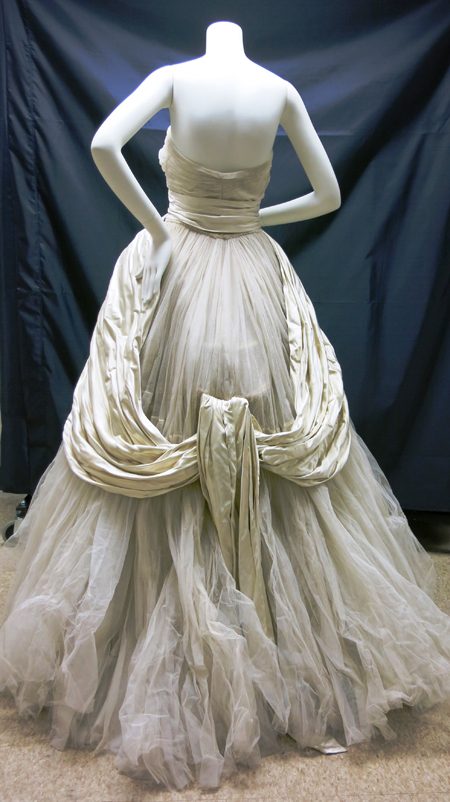
A view of the back of Miss Brucker’s dress. Unless otherwise noted, photographs by CHM staff.
The gown appears simple in design, yet the craftsmanship is impeccable, almost beyond words. Surprisingly, the zipper is located on the front of the dress instead of the back but is concealed by a decorative flap that secures just off center of the bodice.
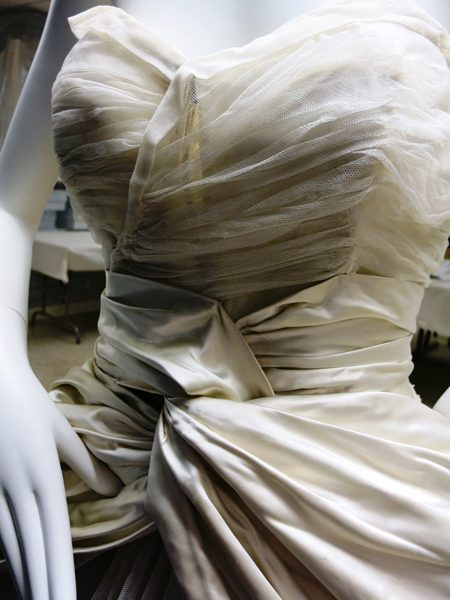
A close-up view of the front with the bodice unzipped.
A look at the interior of the gown reveals its structure. The bodice has a built-in corset, and in the back of the gown a bustle like structure is created from a stiff nylon fabric and plastic boning that aids in shaping the gown, providing the necessary stiffness without the weight.
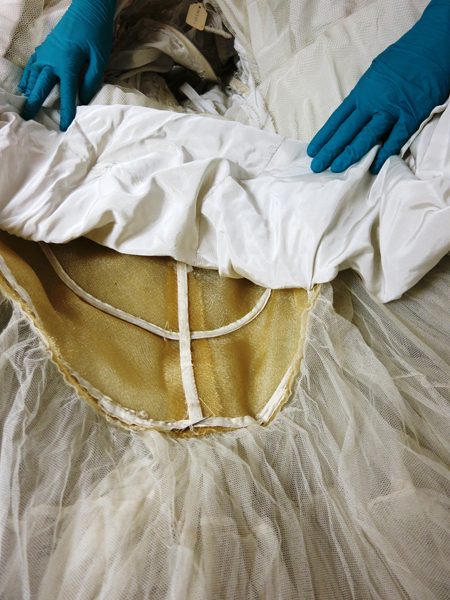
A view of the dress’s interior. The boning and layers of tulle are visible, and the golden part is the nylon structure that shapes the gown.
The cotillion was held on December 23, 1949, in the Royal Skyway Suite on the twenty-third floor of the Stevens Hotel on Michigan Avenue. Marshall Field & Company, the sponsor of the evening, donated money toward the decorations, flowers, dinner, and music. Field’s also gave each debutante a gold link bracelet with a charm engraved with the initial of her first name, and the escorts received a cigarette case on which their names were stamped in gold lettering.
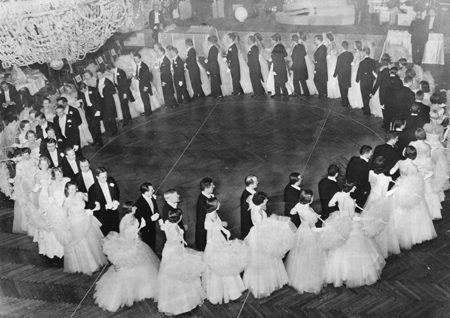
Thirty-seven debutantes with their escorts at the Passavant Cotillion and Christmas Ball, 1949. CHM, ICHi-037055
The event served two purposes: to raise money for Passavant Memorial Hospital’s free-bed fund and to introduce the young ladies of high-standing Chicago families into society. The event raised about $50,000, and newspaper articles described it as an unforgettable night of youth, romance, and opulence. Jeanne Brucker’s story reads like a fairytale: a young girl winning a gown from the newest and most sought-after designer of the time to wear to the ball at which she is introduced into society. In 1983, Mrs. Jeanne B. Heinzelman (née Jeanne Brucker) of Tupelo, Mississippi, donated her treasured Dior gown to the costume collection so that her Chicago story could be told and shared with future generations.